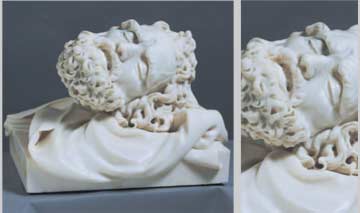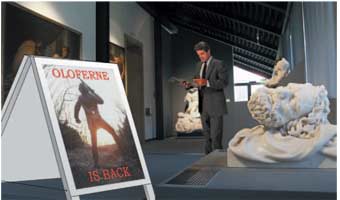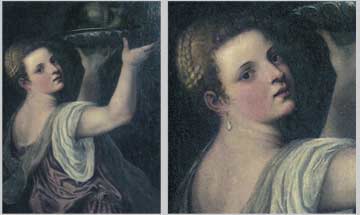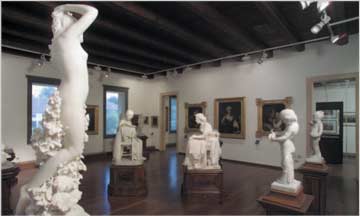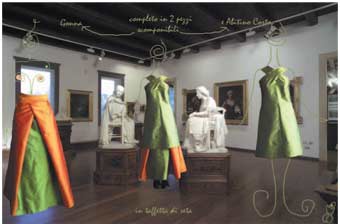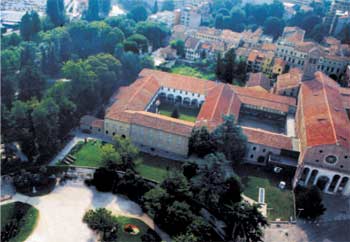
MUSEI CIVICI AGLI EREMITANI
Piazza Eremitani, 8
tel. 049/8204551
![]() critical text by Stefania Schiavon
critical text by Stefania Schiavon
Holofernes, Salomé and the rooms of the Musei Civici inspired Max, Chiara and Claudia's artistic experience, becoming a significant step for their research. These artists were offered the opportunity to handle their usual language and expressive means to trace new paths, allowing their personal visions to be expressed.The result of this is that the spontaneously amusing and ridiculous side of contemporary human contradictions and uneasiness, often depicted in Max Boldrin's photos, gives way to the other side of the coin, the bitter and scathing look which remains after laughing at oneself and the others. That grimace suspended between laughter and its end is captured to tell, with Holofernes, the story of a yearning for power which is a defeat of man on man in all times and all places.Chiara Fabbri Colabich's work is characterised by an original research on communication. Salomé dancing the dance of the seven veils is, for the artist, like a linguistic plot where the imagined movement of the body becomes writing. Dance, being sign and word itself, beats the time of the sequence where love feelings develop, feelings of desire and destruction leading to reach one's aim at any cost.Since every woman deserves to live a fairy tale moment in her ordinary life, Claudia Fabris makes ten dresses for ten Cinderellas. Seamless coloured cloth to plunge into colour, sensations to wear and to play with, dresses that offer the women who wear them the opportunity to express themselves in a creative way, dresses that roll and unroll, that change their shape, as if they lived to enhance the peculiarity and beauty of the bodies they wrap.
